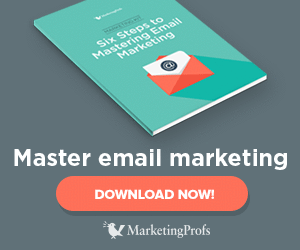Marketing Strategy

What do you think distinguishes entrepreneurs who run profitable businesses from those who barely make ends meet? In answering this question, I am aware of my precarious position: there is a great danger of oversimplifying, generalizing, or freezing stupidity.
So let’s put all the nuances aside and emphasize the main thing. Any successful business is distinguished by a clear and elaborated strategy. Alas, many businessmen are so captured by daily tactical maneuvers (site creation, advertising campaigns, blogging, networking, human resources management, etc.) that they simply do not have enough to develop a marketing strategy at the appropriate level.
What is the “proper level”? It’s simple: a competent strategy will increase the results of your marketing initiatives. This is a chain of solutions that will turn your daily tactics into a reliable algorithm of actions aimed at the results: the best exposure of the brand in the market, new transactions, high marginality, user involvement, well-coordinated teamwork or development of your corporate culture.
A guide to laying the foundation for a strategy is a matter for several paragraphs. Now your move: you need to adapt the general recommendations to the specifics of the business and the team you are working with.
Today, we will lay the foundation, tested by hundreds of small companies that grew, strengthened and developed better than their competitors. And they all started with five steps to create an effective marketing strategy:
- Determining the target audience in detail.
- Differentiation of the market niche in which they work.
- Creation of a unique trading offer.
- Determination of the main competitors and analysis of their marketing activity.
- Formation of competitive advantage of a brand.
The power of magic
The idea is to describe each of the items as concisely and concisely as possible. Such will be your main reference points for the next year or two. Do not deviate from the course. Stay committed to your goals.
This is a trick that will highlight the main thing and help you not to spray. It is confidence. Of course, you can say, “Okay, next time this newsletter will finally shoot, it will surely shoot! But is it really true?
Who is your target audience?
The first decision is the most important one. Who do you work for? In many cases, answering this question will mean “no” to potential customers who are not your CA. They can contact you, you can satisfy their request – but the impact of such interaction will be worse than with your and only your target audience.
This is difficult and inconvenient at the beginning of the journey. Be patient. The more the focus, the better the service. And only then, having created a powerful customer base, you should think about expanding. Perhaps, you should also consider entering new markets.

Clear differentiation of efforts aimed at specific people is the key to effective marketing and business as a whole. In addition, there are only a few types of business models that really work. And each of them is directly tied to the specifics of the target audience, especially the B2B segment.
What niche do you work in?
A niche or category is a short description of your business. Take it as a slogan: Starbucks sells “quality coffee”, design-bureau Gorbunova “develops sites and designs user interfaces”, and Aveb “promotes sites” (although I will return to the specifics of our work in the next part of the article).
It’s amazing how many business owners can’t resist the temptation to talk about everything at once. As a result, you get an incomprehensible definition that does not attract the target audience and confuses customers. Clear and simple wording will help to set marketing priorities. Imagine that you have reached the top of your niche. You are the leader. What qualities are necessary for you?
It is also branding. If a person is painfully trying to remember what you do, then you have a problem. A focused laser burns steel – scattered radiation is powerless. Formulate the essence of your project with the utmost precision.
Your unique selling proposition?
At this stage, it is worth identifying one or two key points that reflect the essence of your services. You don’t need to fill in all the options at once – aim for a bull’s-eye.
Returning to the specifics of our work: we can say that we promote sites, launch contextual advertising, develop online stores and landing pages, create content marketing strategies, optimize conversion rates and clear your reputation in search engines. Yes, it is true. But is that the main thing?
No. Everything we do has one goal in mind: to develop the business of our clients. The rest of our services are just tools to achieve this goal. We did not come to this at once. But, finally, having formulated our priorities, we have attracted exactly those clients whom we dreamed of: people who are focused on results.
Who are your competitors?
Each client is looking for a solution to their problem and comparing alternatives. Whether it’s a search engine or social networking site, a portfolio on your website or a corporate blog, any message you post must have a key idea: what you’re offering and why you should be the one to choose.
What I’m talking about now is not so much about competitive advantage as clear differentiation and alignment from competitors.
However, many entrepreneurs do not pay enough attention to the analysis of other players. Such frivolity, in addition to the obvious disadvantages, is also unacceptable because it harms the user experience. Lack of alternatives is bad. The presence of an endless number of similar variants is not much better.
Suppose you are engaged in Internet marketing. But is it true that all Internet marketers in the city are your competitors? Someone is betting on SEO, someone – on the content, and the third studio and is engaged in contextual advertising.
Segment your competitors in the same way as you do with CA – and highlight the differences in your own messages.
What’s better for you?
Once you’ve identified your competitors, focus on your competitive advantages. The list can be long – prioritize your advantages and, again, you don’t have to talk about everything at once. Choose one or two iron arguments to place them on your home page. You should also include them in the so-called elevator pitch.
In general, “presentations for the elevator” is the ideal solution for our purposes. This is a short story about the concept of a product, project or service, which can be completed during the trip by elevator (about thirty seconds or 100-150 words). Maximum benefit, minimum information.








